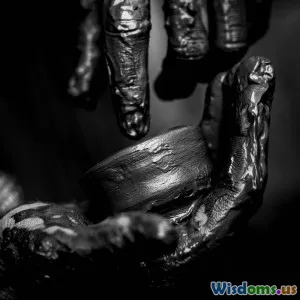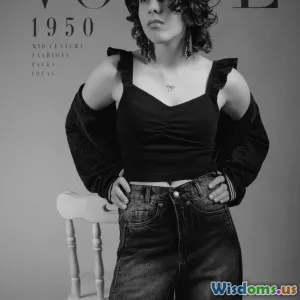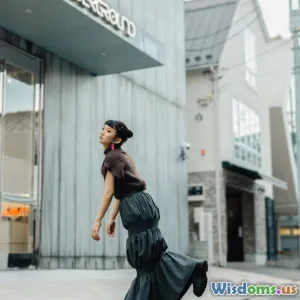
How Slow Fashion Empowers Artisans and Local Communities
8 min read Explore how slow fashion nurtures artisans and revitalizes local communities through sustainable, ethical production methods. (0 Reviews)
How Slow Fashion Empowers Artisans and Local Communities
Introduction
In an era dominated by fast-paced consumerism, the slow fashion movement offers a refreshing narrative that challenges the disposable culture entrenched in the modern apparel industry. But more than just a trend towards sustainable textiles and eco-conscious design, slow fashion is a powerful vehicle for empowering artisans and revitalizing local communities worldwide. It weaves together economics, culture, and environmental stewardship, crafting a fabric of social change that resonates far beyond the products on our shelves.
This article dives deep into how slow fashion empowers individual artisans by ensuring fair pay and recognition, supports local craftsmanship and traditions, and fosters sustainable community development. Let’s explore the transformative power slow fashion wields, not only in reshaping consumer habits but also in nurturing livelihoods and cultural legacies.
What is Slow Fashion?
Slow fashion is an ethical alternative to fast fashion, prioritizing quality over quantity. It emphasizes the use of sustainable materials, longer product lifecycles, and transparent production processes. The core idea is to decelerate the fashion cycle, encouraging consumers to invest in durable clothing crafted with care and mindfulness.
Brands operating within the slow fashion paradigm often collaborate directly with local artisans, utilizing traditional techniques such as hand weaving, embroidery, natural dyeing, or upcycling. This contrasts sharply with the mass-produced, quickly discarded garments associated with fast fashion.
Empowering Artisans: More Than Fair Wages
1. Fair Compensation and Economic Stability
One of the most tangible benefits slow fashion offers artisans is equitable remuneration. According to the Fair Trade Textile Standard, workers in ethical fashion supply chains receive wages that exceed local minimums, permitting greater financial security. For example, Global Mamas, a Ghanaian cooperative, pays premiums above market rates to its female artisans, helping them break cycles of poverty.
2. Skill Recognition and Creative Autonomy
Slow fashion values traditional craftsmanship and cultural heritage. This respect empowers artisans by recognizing their skills as valuable intellectual and creative assets rather than mere labor inputs. The Indian brand Khamir works with rural craftspeople, preserving rare embroidery styles and applique techniques passed down over generations. Artisans contribute original designs, gaining creative ownership unseen in fast fashion contexts.
3. Capacity Building and Education
Empowerment goes beyond payment. Many slow fashion initiatives invest in artisan education, providing training on sustainable practices, business skills, and quality standards. The fashion label Maiyet collaborates with artisans worldwide, creating programs to improve production efficiency, workplace safety, and leadership opportunities.
Strengthening Local Communities
1. Promoting Local Economies
When brands source locally and maintain transparent supply chains linked with slow fashion principles, money circulates within the community rather than flowing to global conglomerates. This creates multiplier effects: as artisans earn more, local markets benefit from higher disposable incomes, fostering broader economic development.
For instance, Artisans of Leisure supports textile cooperatives in Peru, generating employment for hundreds and funding community schools and healthcare.
2. Preserving Cultural Heritage
Many slow fashion pieces make a statement by embodying cultural narratives. Artisans continue traditional practices that might otherwise fade under mass globalization. This preservation enriches identity and pride, promoting social cohesion. The artisan communities in Oaxaca, Mexico, produce handwoven textiles employing pre-Hispanic techniques, supported by slow fashion networks.
3. Environmental Sustainability and Community Health
Local artisan centers practicing slow fashion often integrate organic farming of raw materials, natural dyeing, or low-impact energy use. This minimizes environmental harm while enhancing community health conditions. A good example is SOKO Kenya, which employs sustainable silver jewelry-making methods, reducing toxic chemical use common in industrial processes.
Real-World Examples
Patagonia and Fair Trade Initiatives
Outdoor brand Patagonia includes Fair Trade certification across many garments, paying premiums directly to workers involved in making their products. This initiative supports artisans’ wellbeing and fortifies ethical production models.
Nepal’s Women’s Weaving Cooperatives
The Himalayan region’s cooperative systems exemplify slow fashion’s communal impact: women weavers receive fair wages and channel a portion of profits into education and clean water projects. These endeavors have measurable impacts, increasing literacy rates and local health.
The Consumer’s Role: Driving Change Through Choices
Shoppers seeking ethically made clothing wield power to amplify slow fashion’s benefits. By purchasing fewer, quality pieces crafted by artisans, consumers help create a sustainable market that nurtures communities rather than exploiting them.
Experts such as Safia Minney, founder of People Tree, emphasize: “Every garment you buy from an artisan studio represents a vote for fair wages, cultural preservation, and environmental respect.” Awareness and intentional spending are keys to sustaining this ecosystem.
Conclusion
Slow fashion is a profound movement moving past trends to touch lives directly — from the skilled hands of artisans to the vibrancy of local communities. It intertwines economic fairness, cultural sustainability, and environmental responsibility into every thread and hem.
Empowering artisans through slow fashion means providing fair wages, honoring traditions, and building capacity. It strengthens local economies, preserves invaluable cultural heritage, and promotes sustainable livelihoods that defy the exploitative norms of fast fashion.
As consumers and creators alike awaken to this compelling narrative, the potential to craft a fairer, kinder, and more beautiful fashion landscape is immense. By embracing slow fashion, we don’t just wear clothes—we wear stories of empowerment, truth, and resilience.
References and further reading:
- Fair Trade Textile Standard (fairtrade.net)
- Global Mamas (globalmamas.org)
- Khamir (khamir.org)
- Maiyet (maiyet.com)
- SOKO Kenya (shopsoko.com)
- Patagonia Fair Trade Program (patagonia.com)
- People Tree Advocacy (peopletree.co.uk)
Rate the Post
User Reviews
Popular Posts

















